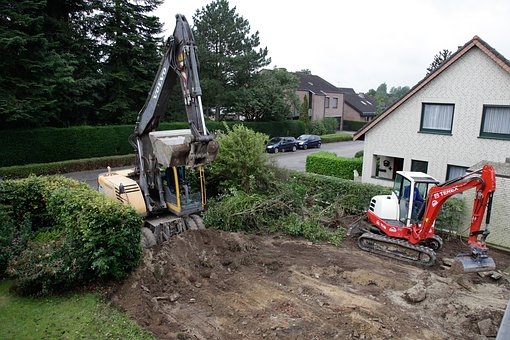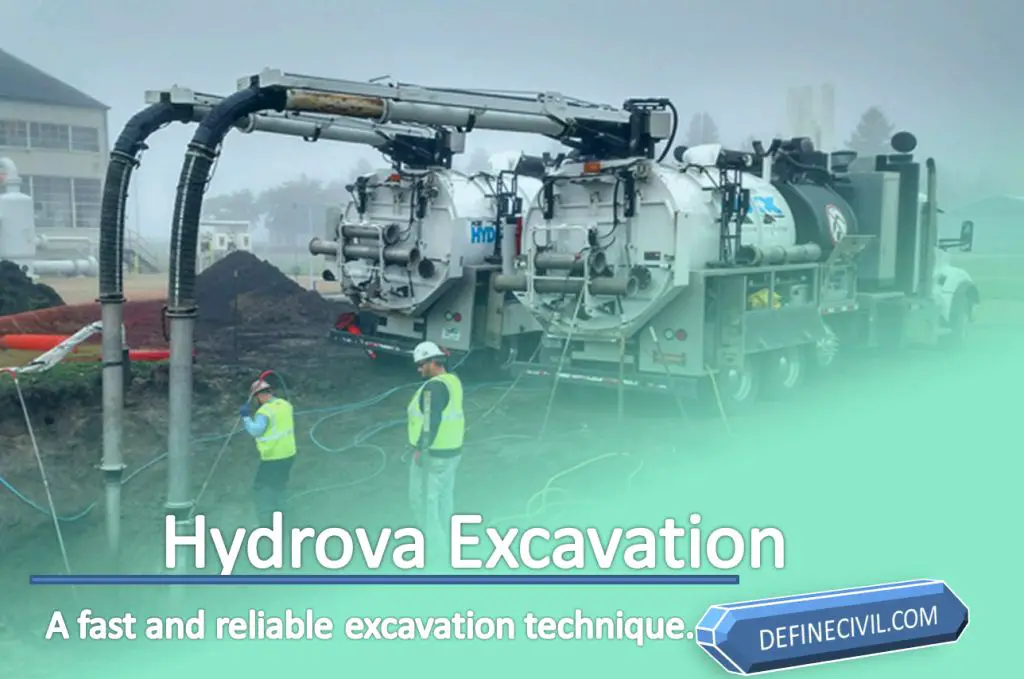Not known Facts About Grading Contractors
Wiki Article
What Does Excavation Contractors Near Me Do?
Table of ContentsThe Basic Principles Of Grading Contractors The Basic Principles Of General Contractor How Excavator can Save You Time, Stress, and Money.The Best Guide To Concrete ContractorsExcavation Contractors Near Me Fundamentals Explained


Scrapers or Pans excavate soil in one place, haul and dispose the dirt in an additional area (excavator). It is difficult to match the efficiency of scrapes for cut/fill dirt operation if the haul range is less then a mile. Scrapes are typically pulled by a rubber tire wheel tractor and are sometimes pushed through the cut area by a bulldozer.
There are often times that scrapes are not utilized for website grading and a dump truck is used: the haul may be to long, the haul may go across roadways where scrapers are not allowed, acid rock may be come across, devices schedule, etc. Unload trucks are in typical use and possibly call for little conversation.
Many vehicles have a top-hinged tailgate that can not dispose any rock broader after that the tailgate size. "Rock body" beds, on the other hand, have no tailgates and can unload any type of size rock, although their volume capacity is diminished. These web links reveal devices specifications for a number of typical dump vehicles. Compaction Tools boosts the thickness of the soil and also in many cases offers a smooth, rolled surface.
The Basic Principles Of Concrete Contractors
From a simple test pit to percussion drilling to core drilling the owner has progressively extra pricey alternatives that generate increasingly much better data regarding the site underground. The Proprietor on a 100,000 SF structure job might license twenty uninteresting areas with split spoon soil samples taken up until rock is gotten to and also after that core samples of rock.Recognizing the type as well as quality of rock (from the core samples) as well as place of rock (from the soils boring) is an actual benefit in jobsite planning. On the other hand, the Owner of a 100,000 SF building might decide to continue with no geotechnical screening whatsoever. The choice about geotechnical testing is generally made by a Proprietor with no input from the Building Supervisor.
An understanding of the approximate location of the rock helps the Construction Supervisor to intend the series of steps adhering to rock excavation. If rock is in one corner of a huge building project, for instance, the planet excavation can begin at the opposite end of the structure in order to start structure work soonest.
Starting the foundation work early would be a good concept if the rock can be eliminated by tearing. Nonetheless, if the rock is exceptionally tough and also requires substantial blasting, it may be prudent to hold foundation work till the blasting is completed. The Construction Supervisor need to collaborate these kinds of choices and utilize all the technological day available.
The Ultimate Guide To Excavating Contractors
Unidentified click reference excavation states that all rock or various other unanticipated materials (omitting harmful materials) come across in the sitework will certainly be the duty of the Specialist at no change in agreement expense. An unidentified excavation is less complex from a book-keeping point ofview as well as puts the duty for geotechnical conditions onto the Sitework Contractor.It's impressive what a heavy rainfall can do to a building and construction job. Prior to the rainfall, the website might be completely dry, hefty equipment efficiently moving planet, the various other professions efficiently performing their work.
In many areas of the globe, the Construction Supervisor should keep in mind a simple truth: IT WILL RAIN. Good planning can reduce the damages as well as interruption of a hefty rainfall to a jobsite. Commonly the excavation and also grading is delegated the Sitework Contractor (and their Foremen is responsible to supervise and direct the heavy equipment and operators).
The Building and construction Manager must be continually aware of what rainfall will certainly do to the job site. It is not unusual for the Sitework Supervisor to work their heavy tools for optimal efficiency and wish it does not rain. One of the very best means to get ready for rain is to slope all qualities to drain pipes as well as to smooth rolled the surface area prior to a rain.
Demolition Can Be Fun For Everyone
The Construction Manager must be far-sighted enough to insure that heavy rain does not quit working on the project much longer than necessary. Daily discussions with Sitework Foremen may be required to achieve this goal. Any time excavation is required below the existing groundwater level on a project, the procedure of dewatering need to be taken into consideration.In an absolutely natural soil, the water travels so slowly through the clay or silt that dewatering is not typically necessary for the relatively brief time of excavation. Dewatering might be needed for a solitary ground excavation or for an entire job website. The most common dewatering techniques are trench drains pipes, deep wells and well factors.

Ground water seepage can also be reduced by cutoff methods such as sheet loading. High dewatering prices have faded the profit margins on far also numerous tasks.
This option must constantly be taken into consideration when examining the prospect of dewatering. Certainly the alternative is only feasible if gravity can site preparation contractors run the water to lower ground. Trench drains can be cut with a backhoe and full of a coarse, Look At This granular material (# 4 rock for instance), yet care needs to be exercised in selecting the water electrical outlet type and area.
The Only Guide to General Contractor
A siphon, necessarily, uses climatic pressure to lug water from one elevation, up over an obstacle, to a reduced altitude. The pipes in a siphon system must be impermeable and some resourcefulness is commonly required to entirely fill the siphon pipeline. The siphon pipeline should be complete for the siphon to start.A deep well consists of a pump, pipe and an upright well casing. The pump consumption is at the bottom of the well case (usually some smashed rock is put there as a filter tool) (trencher). The water is inflated the hose, out of the well case, and also to a suitable discharge place.
In a crude sand, for instance, a big location can be pumped to near the pump intake elevation. A much less absorptive dirt, on the other hand, minimizes the performance of a deep well. Since the pump is normally at the end of the deep well, there are no elevation constraints due to vacuum lift, and deep wells can reduce the groundwater over 50 feet.
On the base of the wellpoint there is a 2 foot long display and also shutoff, water jets out of this shutoff and also develops a hole into which the wellpoint pipe can be lowered. This hole is usually made a bigger size (as an example 10 inches) to enable a coarse sand backfill to help filter the water (concrete contractors).
Report this wiki page